Results 7,271 to 7,280 of 12095
Thread: Anandtech News
-
08-25-17, 11:09 AM #7271
Anandtech: Lite-On SSDs At FMS: New Controllers And TSV NAND Packaging
Lite-On (including its consumer SSD brand Plextor) is one of the largest SSD vendors that is not vertically integrated. They don't manufacture NAND flash memory and don't design their own SSD controllers. Their strategy for competing against the vertically-integrated giants relies on picking the right technologies that are available on the open market and making the most of them with in-house firmware development. This makes Lite-On a great source for second opinions about new NAND flash and SSD controller silicon; they have to make their own judgments about whether new technologies are as great as the manufacturers claim, and they get to do so long before we get retail products to test. Lite-On's plans for exhibiting at Flash Memory Summit earlier this month were upended by the fire that closed the show floor for the entire duration of the conference, but they did manage to show me some of the products and prototypes from their booth.
The most predictable product Lite-On had to show was the new iteration of their EP series of entry-level enterprise NVMe SSDs. Lite-On is still using Marvell's 88SS1093 "Eldora" controller, but now pairing it with Toshiba's 64-layer BiCS3 3D TLC NAND flash. The result is a M.2 22110 drive with capacities up to 2TB, write endurance rated at 1DWPD, and performance that's nothing special for a read-oriented enterprise NVMe drive. Power consumption and price are likely the new EPX's best aspects, but Lite-On hasn't disclosed those numbers. A consumer-oriented version of this drive—shortened to the M.2 2280 form factor by the removal of power loss protection capacitors and equipped with client-oriented firmware—has not been announced but will likely show up in a few months or at CES2018 as the successor to Plextor's M8Pe or M8Se.
Next, Lite-On had an EP-series prototype with two significant changes from the EPX. This prototype featured Marvell's new 88SS1092 "Eldora Plus" controller, and it's the first use of this controller we've encountered. More interestingly, the prototype was equipped with Toshiba's 3D NAND packaged using through-silicon vias (TSVs) instead of traditional wire bonding. Toshiba announced this flash memory last year and showed a die at FMS 2016, but we haven't heard much about this line of R&D recently. Most SSDs—especially M.2 SSDs—need to stack several NAND flash dies in each package in order to reach acceptable capacities. Stacking NAND dies with TSVs gives a higher quality connection between the dies than wire bonding, which allows for faster or lower-power communication between the NAND and the SSD controller, and potentially also for taller die stacks.
Lite-On has verified Toshiba's claims by measuring a 20% power reduction and 30% performance improvement for their SSD equipped with TSV flash. Products from Lite-On using TSV flash could appear as early as this year given how substantial the power and performance benefits seem to be, but it is not clear how the cost and manufacturing volume of the TSV flash compares to the mainstream dies intended for traditional packaging. Toshiba is the only NAND flash manufacturer that has talked much about using TSVs, and they appear to have a substantial lead in incorporating TSV packaging into their NAND flash. This could translate to a significant advantage for Toshiba in a year or two when SSD vendors are planning how to make multi-TB M.2 SSDs capable of PCIe 4 speeds.
Lite-On is continuing their collaboration with controller designer CNEX Labs to develop the Open Channel SSD concept and bring it to market. An open channel SSD allows the host system to bypass the traditional flash translation layer (FTL) and directly manage the allocation of the underlying flash memory. Moving most of the FTL from the SSD to the host system's CPU means the drivers running on the host have to be a lot more complex, but this arrangement brings substantial opportunities for optimization because the OS and applications can better cooperate with the FTL. Lite-On's AD2 SSD is a M.2 PCIe SSD using the CNEX Westlake+ controller to implement an open channel SSD using the LightNVM architecture, which extends the NVMe protocol. LightNVM support is built in to recent versions of the Linux kernel and NVMe tools, so the market might be ready for broader availability of open channel SSD hardware than CNEX's development kits. The long-term prospects for the LightNVM open channel SSD approach are not clear: the NVMe standard has been gradually adding support for application-level I/O hints and instructions to enable many of the same performance optimizations an open channel SSD is desirable for, and the increasingly popular NV-DIMM approach allows just as much low-level access as a LightNVM open channel SSD, but through a very different interface.
The last drive Lite-On showed off was a prototype M.2 SSD using Microsemi's Flashtec NVMe2108 NVMe controller. Microsemi's Flashtec controller line (previously owned by IDT then PMC-Sierra) has been dominant among the largest high-end enterprise SSDs, with controllers offering up to 8 lanes of PCIe connectivity and 16 or 32 channel flash interfaces. The Flashtec NVMe2108 is Microsemi's smallest SSD controller yet, and their first that is suitable for M.2 SSDs. The Flashtec NVMe2108 controller exists in a more mainstream market segment where Microsemi faces far more competition. The 8-channel flash interface on the NVMe2108 controller matches that of most NVMe controllers for M.2 and U.2 SSDs. Lite-On did not share detailed performance information about this drive, but they have achieved random read speeds of over 500k IOPS, which is the fastest that any user of this controller has achieved so far.
More...
-
08-25-17, 11:09 AM #7272
Anandtech: AMD Releases Radeon Software Crimson ReLive Edition 17.8.2
This week, AMD has released Radeon Software Crimson ReLive Edition 17.8.2, quickly following up on this Monday’s 17.8.1 release and the last Monday’s launch of Radeon RX Vega64. This quick update addresses some fairly important issues: several unresolved RX Vega bugs and new game driver support. Although it is focused on polishing RX Vega related matters, 17.8.2 is a unified driver like 17.8.1, and applies for both RX Vega-based cards and other products.
Featuring Driver Version 17.30.1071 (Windows Driver Store Version 22.19.673.0), Radeon Software 17.8.2 brings support for F1 2017, which launches the day after this driver release, as well as PlayerUnknown’s Battlegrounds Early Access and the Destiny 2 Beta. The game support is largely focused on the Radeon RX Vega64, with AMD citing up to 4% performance improvement for F1 2017 and up to 18% performance improvement for PUBG compared to the previous 17.8.1.
Moving on to bug fixes, AMD has taken care of two key unresolved RX Vega issues. Radeon WattMan should now reach applied overclock states on RX Vega cards, and in addition, the “Reset” option in the Radeon Settings Gaming tab will always properly set HBCC to the default disabled state. For other Vega issues, AMD has fixed random corruption in Microsoft desktop productivity applications on RX Vega graphics, as well as fixing an issue where the display may go blank or black after upgrading or installing with RX Vega cards. Lastly, Eyefinity configurations can be properly created through the Eyefinity Advanced Setup option.
Radeon Software Crimson ReLive Edition 17.8.2 is available for Windows 10 (64-bit and 32-bit) and Windows 7 (64-bit and 32-bit).
The updated drivers for AMD’s desktop, mobile, and integrated GPUs are available through the Radeon Settings tab or online at the AMD driver download page. More information on this update and further issues can be found in the Radeon Software Crimson ReLive Edition 17.8.2 release notes.
More...
-
08-25-17, 12:15 PM #7273
Anandtech: ASUS ROG Zephyrus with Core i7-7700HQ and GeForce GTX 1070 Available for $
ASUS has started to sell a more affordable version of its flagship ROG Zephyrus gaming laptop it launched earlier this year. The new model retains all the features of the top-of-the-range SKU when it comes to dimensions, weight, power consumption and other peculiarities, but it costs 15% less and comes with a slower GPU as well as a lower-capacity SSD.
When ASUS launched its ROG Zephyrus gaming notebook in late May, the company announced two models priced at $2699 (GX501VI) and $2299 (GX501VS), but only disclosed the specifications of the flagship model that hit the stores this July. So while we knew that both models would share the same 1.8-cm thick chassis featuring a 15.6” FHD display with a 120 Hz refresh rate, and other chassis-level features, we didn't know how the component selections would differ between the two laptops. Until now.
Recently, ASUS has finally started to sell the “affordable” GX501VS mode, and it appears that it is specifications are not that different when compared to the fully-fledged ROG Zephyrus GX501VI. The cheaper model features the same Intel Core i7-7700HQ CPU and 16 GB of RAM. What's changes is that ASUS has swapped out the GPU and SSD for a GeForce GTX 1070 Max-Q and a 256 GB of solid-state storage respectively. This means the GX501VS packs a bit slower GPU and half the SSD capacity, but nets a $400 (15%) savings in the process.
Since the key features of both machines are the same: a sleek form-factor, desktop-like performance, a display with a 120 Hz refresh rate featuring G-Sync, Thunderbolt 3 support and upgradeability, the cheaper version may get rather popular in its niche simply because not everyone needs maximum performance on a laptop (and some may actually prefer a less power hungry GTX 1070).ASUS ROG Zephyrus GX501 GX501VI-XS74 GX501VS-XS71 GX501 'cut down' Display Diagonal 15.6" Resolution 1920×1080Refresh 120 Hz, NVIDIA G-Sync60 Hz, NVIDIA G-SyncCPU Core i7-7700HQ (4C/8T, 6 MB, 2.8/3.8GHz) Core i5-7300HQ
(4C/4T, 6MB, 2.5/3.5GHz)Graphics NVIDIA GeForce GTX 1080 Max-QNVIDIA GeForce GTX 1070 Max-QRAM 16 GB DDR4-2400 (upgradeable to 24 GB) unknown Storage Capacity 512 GB SSD 256 GB SSD Interface PCIe 3.0 x4Wi-Fi 802.11ac Wi-Fi Bluetooth Bluetooth 4.1 Ethernet 1 GbE controller USB 4 × USB 3.0 Type-A1× USB 3.1 Type-C (via TB3 connector)Thunderbolt 1 × USB Type-C Thunderbolt 3 connectorDisplay Outputs 1 × DisplayPort 1.2 (via TB3 port)1× HDMI 2.0Keyboard Chicklet RGB-backlit keyboard Other I/O Microphone, stereo speakers, audio jacks, webcam Battery 50 Wh Dimensions Width: 379 mm
Depth: 262 mm
Thickness: 17 - 18 mmWeight 2.2 kilograms Price $2699 $2299 unknown
Meanwihle it is interesting to note that ASUS also mentions the third ROG Zephyrus model with a display featuring a 60 Hz refresh rate and Intel's Core i5-7300HQ on its website. So the company looks poised to eventully introduce an even more affordable version of the product, at least for certain markets
The ASUS ROG Zephyrus GX501VS is now available for $2299 from Amazon and directly from ASUS.

Related Reading:
- ASUS Reveals The Ultra-Slim ROG Zephyrus Laptop With GTX 1080 Max-Q
- Acer Announces Predator Triton 700 Gaming Laptop: Core i7, GeForce GTX 10 Series, & 1 TB SSD
- Razer Blade Gets Core i7-7700HQ, Adds 4K Touchscreen, 1 TB SSD Options
- Razer Re-Launches The Razer Blade Pro: GTX 1080 And 4K G-SYNC
- Lenovo Launches Legion Branded Gaming Laptops
More...
-
08-25-17, 01:45 PM #7274
Anandtech: Cryptomining Demand Drives Exceptionally High Graphics Card Shipments in Q
This week, Jon Peddie Research (JPR) reported significantly higher discrete GPU shipments for Q2 2017, attributing the historically unprecedented increase to cryptocurrency mining, specifically to Ethereum mining. As opposed to the cryptocurrency mining demand of a few years ago, JPR notes that the ASIC-resistant nature of Ethereum mining has especially encouraged GPU mining. In terms of discrete desktop graphics market share, AMD gained a few percentage points from NVIDIA, bringing the current balance to AMD’s 29.4% versus NVIDIA’s 70.6%.
In context, the GPU and PC markets fluctuate in a relatively consistent seasonal pattern: shipments trend flat to down in Q1, notably down in Q2, notably up in Q3, and up to flat in Q4. According to JPR, Q2 2017 has seen an unprecedented 31% increase in discrete GPU shipments from Q1, the first time in over eight years that Q1-to-Q2 shipments have seen an increase at all. Discounting the minor increases during the recession, Q2 has always been the seasonally weak quarter for graphics card shipments.
Drawing a contrast to the limited Bitcoin and Litecoin mining impact on 2013 shipments, JPR identifies the memory-intensive Ethash, Ethereum’s hashing algorithm, as deterring ASIC development for Ethereum mining, and in turn any sudden GPU-displacing bust. That is, during the Bitcoin boom, low cost ASICs displaced GPUs. Consequently, JPR does not see a repeat of market cannibalization by used mining cards. While the diminishing return-on-investment (ROI) will eventually flatten out Ethermining-fueled GPU demand, this quarter saw a direct and significant Ethermining/cryptomining impact on discrete graphics demand.
On the back of that cryptomining demand, discrete GPUs have regained market share over integrated GPUs (iGPUs). Weak iGPU and desktop PC shipment numbers continue to reflect the overall declining PC market, while the high-end gaming PC sector continues to be the bright spot for the market. Overall, GPU shipments increased by 7.2% from last quarter.
Vendor-wise, JPR reports that AMD’s overall unit shipments increased 7.8% quarter-to-quarter, Intel’s shipments increased 6.3%, and NVIDIA’s shipments increased 10.4%. As mentioned earlier, AMD did gain market share in discrete desktop graphics, but still remains below last year’s market share level.
For AMD, their market share is back to Q2 2016 levels of around ~30%. The past year has seen launches of NVIDIA’s Pascal-based consumer cards, as well as of AMD’s Polaris-based RX 400 and 500 series cards; of the latter, the Polaris-based cards were explicitly a volume-play, and did not target the high-end market. To that end, the GTX 1070 and above did not have competition until this month, with AMD’s launch of RX Vega cards, and on the face of it, while Polaris has improved AMD's market share against NVIDIA, it has not made a dramatic difference. As the next few months roll on, the RX Vega cards, as well as Vega 11-based cards, will play a large role in AMD’s aspiring return to its historical 35% – 40% discrete desktop GPU market share.
For cryptomining demand, the remarkable impact on discrete graphics shipments does match up with general reports of mainstream graphics card shortages. When we looked at the discrete graphics market in Q2 and Q3 of 2016, the cryptocurrency mining demand then was nothing like this quarter. Now that the Ethereum mining mania has been quantified into numbers, it has revealed some of the context and reasoning behind cryptomining cards, cryptomining motherboards, and Radeon Pack bundles. And what the numbers reveal is that Ethereum GPU mining has been ridiculous in every sense of the word.
While Ethereum itself will die down eventually, it is anybody’s guess if GPU cryptomining booms will be firmly part of graphics card economics.
More...
-
08-25-17, 03:46 PM #7275
Anandtech: Western Digital Launches New My Book Duo Storage Systems: 360 MB/s, USB-C,
Western Digital has released its new My Book Duo external storage systems for consumers. The new devices run two 3.5” WD Red HDDs in RAID 0 or 1 mode and have capacity of up to 20 TB. The drives come in a new enclosure that uses a USB 3.0 Type-C port to connect with hosts (hosts can use USB-C to USB-A adapters as well) and has an additional USB 3.0 Type-A port on the backside to connect other devices.
The WD My Book Duo storage systems are based on WD's Red series hard drives, running them in RAID 0 for extra performance or RAID 1 for redundancy. The WD Red HDDs have a 5400 RPM spindle speed and feature 64 MB, 128 MB, or 256 MB of cache. Internal transfer rates of WD Red drives vary from 147 MB/s to 210 MB/s depending on the capacity, and therefore performance of the WD My Book Duo systems will vary as well. Western Digital declares maximum performance of the new My Book Duo at 360 MB/s, which should be achievable by most of the models in the lineup.
Western Digital does not disclose which RAID controller it uses inside the My Book Duo storage systems, but states that it supports hardware AES-256 encryption. To password protect the external drives, users will have to use the WD Security software.
Speaking of software, the manufacturer ships the My Book Duo products with the WD Backup suite, which automatically backups data from Windows-based PCs as well as from cloud services, such as Dropbox, Google Drive, OneDrive, Facebook, and Instagram. With Macs, users will have to use Apple’s Time Machine program. In addition, the WD My Book Duo comes with WD's Drive Utilities suite, which monitor and manage the health of the enclosed HDDs.
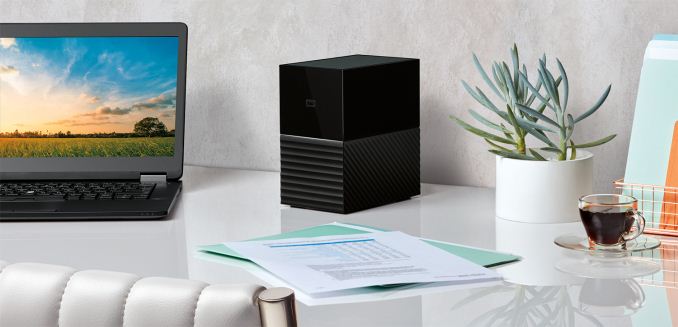
When it comes to overall size, Western Digital’s My Book Duo does not seem to be too bulky: it is 180 mm tall (7.09”), 100 mm wide (3.94”) and 160 mm deep (6.3”). The My Book Duo storage systems come with external power adapters — a 36 W wall-wart style power adapter for 12 TB model and below as well as a 48 W power brick for 16 TB and 20 TB SKUs. The latter is a bit strange because the WD Red 8 TB and 10 TB HDDs are filled with helium rather than traditional air, and consequently their power consumption is lower than the previous-generation lower capacity WD Red drives.
Western Digital has already begun shipments of its new My Book Duo storage systems for consumers. The devices are available from WD.com and from select retailers. The top-of-the-range 20 TB model costs $799.99, the entry-level 4 TB version is priced at $259.99, and a mid-range 12 TB SKU carries a $419.99 price tag. All the WD My Book Duo storage systems are covered by a three-year warranty.Western Digital's WD My Book Duo (2017) External Storage Devices Capacity Transfer Rate Interface Dimensions Model Number Price 4 TB Up to
360 MB/s,
depends on modelUSB 3.0 Type-C Height: 180 mm/7.09”
Length: 160 mm/6.3”
Width: 100 mm/3.94"WDBFBE0040JBK-NESN $259.99 6 TB WDBFBE0060JBK-NESN $289.99 8 TB WDBFBE0080JBK-NESN $329.99 12 TB WDBFBE0160JBK-NESN $439.99 16 TB WDBFBE0160JBK-NESN $599.99 20 TB WDBFBE0200JBK-NESN $799.99
Buy WD 20TB My Book Duo on Amazon.com

Related Reading:
- Western Digital Launches New My Passport Ultra HDDs: New Enclosure, Up to 4 TB
- WD Adds Helium-Filled 10 TB NAS HDDs to WD Red, WD Red Pro Lineups
- Western Digital Expands Purple Lineup with a 10 TB Helium-Filled HDD
- Western Digital Introduces Its First Helium-Filled HDDs for Consumer Applications
- Western Digital Announces Ultrastar He12 12 TB and 14 TB HDDs
- Western Digital Adds Helium-Filled WD Gold 10 TB HDD to Lineup
More...
-
08-25-17, 07:19 PM #7276
Anandtech: NVIDIA Releases 385.41 WHQL Game Ready Driver: ShadowPlay Highlights for P
After promising an August 24th Game Ready driver for Destiny 2, NVIDIA has delivered by releasing driver version 385.41, focused primarily on game updates. This edition brings Game Ready support for the following titles: Destiny 2 PC Open Beta, PlayerUnknown’s Battlegrounds (PUBG), ARK: Survival Evolved, F1 2017, Pro Evolution Soccer 2018 (PES 2018), and Quake Champions Early Access. In addition, 385.41 brings ShadowPlay Highlights and NVIDIA GameWorks/ShadowWorks technology HBAO+ to PUBG.
With ShadowPlay Highlights debuting in LawBreakers for the 384.94 release, PUBG becomes the second game to support the feature. In a nutshell, ShadowPlay Highlights requires GeForce Experience and automatically captures gameplay video and screenshots, allowing for easier sharing and uploading. For PUBG, ShadowPlay Highlights needs to be enabled in the PUBG Graphics settings, and then enabled in GeForce Experience.
The usual Game Ready support comes for ARK: Survival Evolved, which leaves Early Access on August 29th, and F1 2017, which launched this Friday for PC. For PES 2018, which launches in the second week of September, NVIDIA has also included Ansel support. To recap, Ansel is NVIDIA’s own ultra-high resolution screenshot utility with an artistic flair, able to capture 360 degree 3D images.
Following the focus on games, 385.41 sees SLI profiles added or updated for the following titles: Destiny 2, LawBreakers, ARK: Survival Evolved, Faith of Danschant, Secret World Legends, and Starpoint Gemini Warlords. Whisper Mode profiles were also added for F1 2017 and Destiny 2 Beta. Lastly, a 3D Vision profile was added for PES 2018, rated ‘Excellent.’
Wrapping things up, NVIDIA has removed the nvtray process, effective for GeForce Experience 3.9 and later. Similarly, the NVIDIA Tray icon has been eliminated from Windows Task Manager. For bug fixes, this release features only one, addressing GTX 970 framerate drops during Quantum Break gameplay.
The updated drivers are available through the GeForce Experience Drivers tab or online at the NVIDIA driver download page. More information on this update and further issues can be found in the 385.41 release notes.
More...
-
08-25-17, 10:36 PM #7277
Anandtech: Intel Discontinues Xeon Phi 7200-Series ‘Knights Landing’ Coprocessor Card
Intel has announced that it had discontinued its Xeon Phi 7200-series coprocessor cards codenamed Knights Landing. The PCIe cards have never became mass market products, so their EOL will hardly be noticed by many. The company says that adoption of its Xeon Phi 7200-series processors in LGA3647 form-factor is growing and it does not believe that the PCIe versions will become nearly that popular.
The products in question are the Xeon Phi 7220A, 7220P and 7240P coprocessors, which were used for software development by various close partners of Intel, but were never released as commercial products (even though TYAN was ready to support Intel’s PCIe coprocessors). With that in mind, Intel discontinued the SKUs on August 24 immediately without initiating a lengthy EOL program that would enable partners to order additional units, presumably because none of the cards were ever shipped commercially in any viable quantity. By contrast, Intel's Xeon Phi 7200-series CPUs are shipping and will be available going forward.
Before Intel initiated the EOL process for the Xeon Phi 7220A, 7220P and 7240P add-on cards, the company removed references about the boards from its website. When asked about the reasons, an Intel representative said that the chipmaker decided not to offer the products for the general market, but Xeon Phi remains a key element of Intel’s product stack.
The statement by Intel reads as follows:
“Intel continually evaluates the markets for our products in order to provide the best possible solutions to our customer’s challenges. As part of this on-going evaluation process Intel has decided to not offer Intel Xeon Phi 7200 Coprocessor (codenamed Knights Landing Coprocessor) products to the market.
Given the rapid adoption of Intel Xeon Phi 7200 processors, Intel has decided to not deploy the Knights Landing Coprocessor to the general market.
Intel Xeon Phi Processors remain a key element of our solution portfolio for providing customers the most compelling and competitive solutions possible.”
Intel did not provide an exact reason for why it decided not to make the Xeon Phi 7200-series cards available for the mass market. But here is some food for thought. Compute performance of the Xeon Phi 7220A, 7220P and 7240P PCIe coprocessors is slightly under 3 TFLOPS FP64, which is below 3 – 3.4 TFLOPS offered by numerous Xeon Phi LGA processors. Furthermore the coprocessor cards by their very nature have much more limited I/O options than their socketed counterparts, relying on a single PCIe x16 link back to the host, versus a socketed processor having 36 PCIe lanes of its own to directly attach to peripherals. Conversely, socketed Knights Landing doesn't support multi-processor setups (there's no QPI link), so the coprocessor cards could be used for density, just with much more limited connectivity.
At least for now, Intel does not want to compete against add-on PCIe compute accelerators with its Xeon Phi products. A big question is whether it actually needs to, given the stand-alone capabilities of Xeon Phi and its performance characteristics. But that is a completely different conversation.
Related Reading:
- Intel’s "Knights Landing" Xeon Phi Coprocessor Detailed
- Intel @ SC15: Launching Xeon Phi “Knights Landing” & Omni-Path Architecture
- SuperComputing 15: Intel’s Knights Landing / Xeon Phi Silicon on Display
- TYAN Shows Two Skylake-SP-Based HPC Servers with Up to 8 Xeon Phi/Tesla Modules
- Supermicro Releases Intel Xeon Phi x200 (KNL) Systems: Servers and a Developer Mid-Tower
- ASRock Rack Launches the 2U4N-F/X200: Four 72-core Knights Landing Xeon Phi CPUs in 2U
- Intel Announces Knights Mill: A Xeon Phi For Deep Learning
More...
-
08-26-17, 08:08 AM #7278
Anandtech: AOC to Launch Curved QHD Displays with 0.5 ms Response Time in 2018
In a surprising move, AOC has announced plans to launch a new series of AGON gaming displays with a 0.5 ms response time in Q2 of next year. The displays will be curved, will feature a QHD resolution and will rely on a new TN panel from AU Optronics. The monitors will support adaptive refresh rate technologies from AMD and NVIDIA and will certainly not be cheap.
The big question with this announcement is of course how exactly did AUO and AOC manage to decrease the GtG response time of a TN panel to 0.5 ms? So far, AUO has not publicly announced this panel. Moreover, given the striking similarity of the panel used for the AG273QCX/AG273QCG and Acer's Predator Z271UV (same size, curvature, brightness, ‘wide gamut’, up to 165 Hz refresh rate, etc.), it is possible that the panels are close relatives, but the one used by AOC features a technique that cuts GtG response time from 1 ms to 0.5 ms. Either way, details are unfortunately slim at this time, but given AOC's bold claim, this bears further watching.
Otherwise, AOC’s AGON AG273QCX and AGON AG273QCG have a lot in common: both are based on the same 27” curved display panel from AUO featuring a 2560×1440 resolution, a wide color gamut (more on that below), very high refresh rates of 144 and 165 Hz, 400 nits brightness, as well as the aforementioned 0.5 ms response time. The key differences between the AG273QCX and the AG273QCG are different adaptive refresh rate technologies: the former supports AMD’s FreeSync 2 with HDR, the latter features a bit higher refresh rate and NVIDIA’s G-Sync (sans HDR). The lack of HDR on the G-Sync model presumably being due to the fact that NVIDIA mandates at least 1000 nits for its G-Sync HDR platform.
Unfortunately, AOC does not specify what exactly the “Wide Color Gamut” support mentioned in its slides means. But given that we have seen a degree of DCI-P3 support on the TN-based Acer Predator Z271UV, this is a distinct possibility for the new AOC displays as well. Along those lines, one of AOC’s representatives said in a conversation with PCGamesN website that the new TN panel from AUO is not only fast and relatively bright, but also has a considerably improved color quality, which the rep compared to IPS-based displays. The official for AOC confirmed that the panel still has TN’s traditional 170°/170° viewing angles, but argued that gamers would not feel it due to their usage model.AOC's AGON³ Displays with 0.5 ms Response Time AG273QCX AG273QCG Size 27" Panel Type Curved TN Resolution 2560×1440 Pixel Response Time 0.5 ms Color Gamut 'Wide Color Gamut' Maximum Refresh Rate 144 Hz 165 Hz Adaptive Refresh Rate Tech AMD FreeSync 2 NVIDIA G-Sync Launch Time in EU April 2018 May 2018 MSRP €599 ($706) €699 ($824)
AOC promises that the AGON AG273QCX featuring the FreeSync 2 with HDR will hit the market in April 2018 and will cost €599 ($706). The G-Sync-supporting AGON AG273QCG is expected to be available in May 2018 for the price of €699 ($824). Keep in mind that since displays are based on brand new panels, their MSRPs and ETAs at the moment are preliminary and they may change.
The actual slide demonstrated by AOC at Gamescon has a typo: both displays are based on a TN panel.
Related Reading:
- AOC Launches the AG352QCX: 35-Inch 200 Hz 2560×1080 Curved Display with Adaptive-Sync
- AOC Expands AGON Family with Curved AG322QCX and AG272FCX 144 Hz Displays
- ASUS ROG Strix XG27VQ Available: 27” Curved, FHD@144Hz & FreeSync w/ELMB
- BenQ Announces ZOWIE XL2546 ‘eSports’ Display: 24'', FHD, 240 Hz, DyAc ULMB Tech
- Samsung Announces First Freesync 2 Monitors: CHG70 & CHG90 - Quantum Dots, Up to 49”, 144 Hz, DCI-P3
- Acer Predator Z35P Available for Order: Curved 35" with 3440×1440@120 Hz and G-Sync
Sources: PCGamesN (via TechPowerUp).
More...
-
08-26-17, 11:15 AM #7279
Anandtech: Lian-Li Reveals PC-V3000: Full-Tower Aluminum Chassis
Lian-Li has been rather busy over the past couple of months announcing and releasing new or updated computer chassis. Cases like the diminutive Mini-ITX tower in the PC-Q39, the PC-T70 open air test bench, PC-01 Mid-Tower, all the way up to their Motorized Adjustable PC Desk in the DK-05, have been made public over that time. Continuing not to rest on their laurels, Lian-Li announced their latest product in the full-tower PC-V3000.
First spotted in late 2016, the PC-V3000 is a continuation of their flagship line of full-tower PC cases, with the goal of “being the ultimate Aluminum and tempered glass full-tower PC.” Internally, the case is constructed of high-quality steel that's said to improve the case's structural rigidity, durability, and acoustic performance. The external panels are made of Lian-Li's signature brushed aluminum and use their rivet locking mechanism for easy removal or installation. The angled sides of the front fascia are where air comes into the top two compartments. The tempered glass panel is on the left side of the case allowing owners to show off the hardware inside in the first chamber.
The full-tower chassis was designed for "massive liquid cooling radiators" and is Lian-Li’s first case capable of holding four radiators. A 480mm radiator can fit at the bottom of the case, while the top is able to house up to a 420mm radiator. The front panel supports up to either a 360 or 280mm radiator, with a final 120mm radiator at the rear. There is quite a bit of cooling power available if users stuff this case full of radiators.
Inside the case, all nine 3.5” drive bays are removable, with six in the main chamber, and three in the bottom chamber. Two additional 2.5” drives can be mounted on the rear of the motherboard tray, for a total of ten 2.5” (when only 2.5” are used). Those mount positions can be used for “flexible mounting” of up to four pump/reservoir mounts. Lian-Li also includes two individual supports to prevent GPU bending on long and heavy cards. The case supports ATX PSUs up to 300mm long, GPUs up to 170mm tall and 360mm long, and CPU coolers can be up to 170mm in height as well. Pretty spacious, but always check the specifications for compatibility.
The case integrates subtle RGB lighting with an included front panel LED strip running vertically in the brushed aluminum panel (the line you see above the Lian-Li symbol). There are dials to control them hidden behind the front panel. The I/O panel, located on the top, has a single USB 3.1 Type-C connector, two USB3.0 ports, and an HDMI port (good for VR systems). Additionally, there are front panel audio jacks for a microphone and headphones rounding out I/O connectivity.
Below is listed the full specifications from the Lian-Li website:
We can expect to see these on store shelves and websites in the US around the middle of September. The case is priced at $449.99.Lian-Li PC-V3000 Full-Tower Chassis Model PC-V3000 Case Type Full Tower Chassis Dimensions (W)245mm x(H)625mm x(D)605mm Color Black Front/Side Panel Aluminum / (L) Tempered Glass, (R) Aluminum Body Material SECC Net Weight 12kg External Drive Bays None HDD/SSD Bays 9x 3.5" or 10x 2.5" Expansion Slots 8 Motherboard Type E-ATX System Fan (Optional) 3x 120mm(front), 1x 120mm (rear)
(4x 120mm or 3x 140mm (top and bottom)I/O Ports 2x USB3.0, 1x USB3.1 Type-C, HDMI, HD Audio VGA Card Support (L)360mm x (D)170mm CPU Cooling Support (H)170mm PSU Support ATX PSU,(L)300mm Radiator Support Top: 360mm x 120mm or 420mm x 120mm
Front: 360mm x 120mm or 280mm x140mm
Bottom: 480mm x120mm or 420mm x140mm
Gallery: Lian-Li PC-V3000 Full-Tower Chassis





Related Reading:
- Lian-Li Releases PC-Q39 Tempered Glass Mini-ITX Tower
- Lian-Li Announces Availability of the DK-05 Motorized Adjustable PC Desk
- Lian-Li Launches PC-T70 Test Bench
- Lian-Li Launches PC-012 Mid-Tower: Three Chambers, E-ATX, LCS-Focused
More...
-
08-26-17, 02:39 PM #7280
Anandtech: HP Announces Omen X Laptop: 17.3” LCD, Core i7 + GeForce GTX with Overcloc
HP has announced its first Omen X gaming notebook targeting the most demanding segment of the market — customers seeking for maximum performance and not afraid of overclocking. The new systems will feature ultra-high-end mobile components, such as Intel’s unlocked Core i7 mobile CPUs, NVIDIA’s GeForce GTX 1070/1080 GPUs, high-end DIMMs, advanced SSDs, and will be user-upgradeable, just like the existing Omen X desktops. The Omen X laptops will be available later this year in multiple configurations.
Unlike some of its rivals on the market of gaming PCs in general, HP has not addressed the ultra-high-end of the gaming market either with desktops (the company does not offer any HEDT-based machines) or with laptops for quite some time. HP’s Omen gaming notebooks available today are rather powerful and up-to-date, but they don’t offer overclocking and voltage tweaking capabilities to those who want to push their PCs to the limits. With the new Omen X laptop, HP is changing its approach and getting to a new segment of the market, which can hardly boast to be high volume, but promises to be lucrative.
Like many other enthusiast-class systems, the HP Omen X laptop will be all about customization and choice. The PC will feature a 17.3” display and HP will offer to selection of two panels: a 4Kp60 panel and a FHD panel with a 120 Hz refresh rate. Such a choice makes a lot of sense since some may consider 3840×2160 resolution too high for a 17.3” screen, but find a 1920×1080@120 Hz especially suitable for gaming. Both panels are expected to support NVIDIA’s G-Sync adaptive refresh rate technology.
HP does not want to disclose all the specifications of the Omen X just now, but it says that select models will be come with unlocked/overclockable processors, which means Intel’s Core i7-7820HK CPU — the only overclocking-friendly mobile Kaby Lake processor in Intel’s arsenal (at present). The CPU will be paired with DDR4 memory operating at up to 2800 MT/s (i.e., overclocked). As for graphics, HP will use NVIDIA’s GeForce GTX 1070 and 1080 notebook GPUs, which will be overclockable and/or factory-overclocked. HP says that select Omen X configurations will be equipped with a cooling system featuring a vapor chamber and four 3.5-mm heat pipes that transfer heat to four radiators.
As for storage sub-system, HP says that the Omen X laptop will be able to accommodate two SSDs in RAID 0 as well as a 2.5” HDD with 7200 RPM spindle speed for bulk storage, wedding performance and capacity. HP promises that memory and storage upgrades of the Omen X notebook will be easy because all components will be accessible by opening up a single bay.
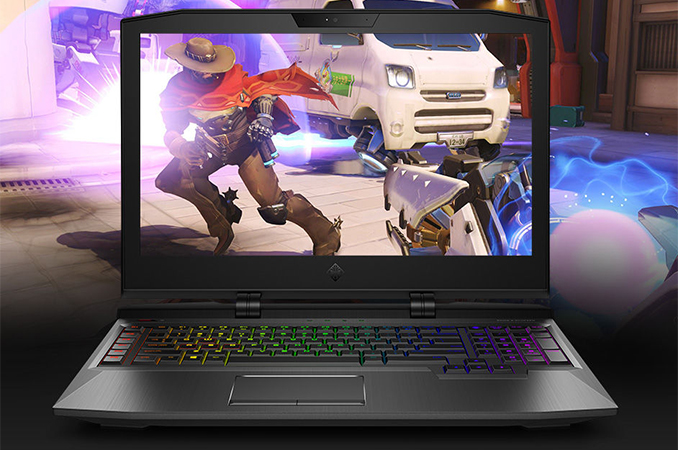
Connectivity capabilities of the Omen X laptop will be rather rich: it will feature a 802.11ac Wi-Fi and Bluetooth module (with software that prioritizes packets from gaming applications), an Ethernet port, two Thunderbolt 3 (USB-C) headers, one HDMI 2.0a output, one Mini DisplayPort, three USB 3.0 Type-A connectors, an SD card reader as well as 3.5-mm audio connectors for headphones (supporting DTS Headphone:X enhancements) and a microphone. Speaking of audio, the PC will also feature an audio sub-system co-developed with Bang & Olufsen.
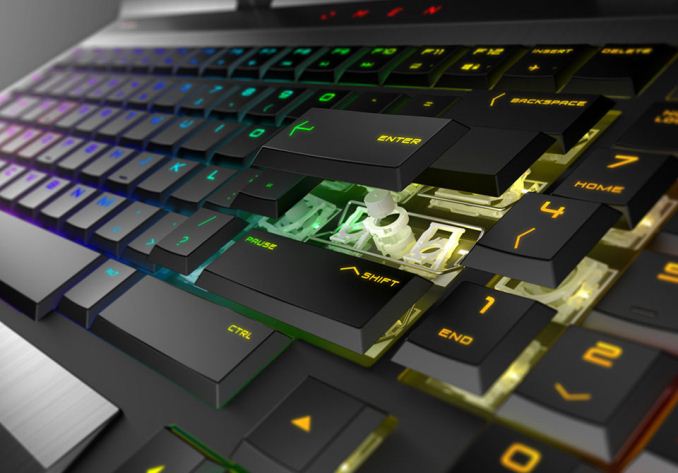
To top things off, the HP Omen X will come with a mechanical RGB LED-backlit keyboard with programmable keys and N-key rollover support. RGB lights will also be present on the backside of the display lid and across the chassis (eight zones in total). All RGB lights will be customozable using the Omen Command Center Software.
The HP Omen X laptop will hit the market sometimes in Q4. An entry-level configuration featuring NVIDIA’s GeForce GTX 1070 will cost $2,299, but the remaining specs are yet to be confirmed. One of the things that we can be sure about is that HP’s rather massive Omen X will not be easily transportable because of its 4.9 kilograms (10.8 lbs) weight.HP Omen X Laptop 1080p144 Model 4Kp60 Model Display Diagonal 17.3" Resolution 1920×10803840×2160Refresh 120 Hz, NVIDIA G-Sync60 Hz, NVIDIA G-SyncCPU Core i7-7820K (4C/8T, 8 MB, 2.9/3.9GHz) in select models Graphics NVIDIA GeForce GTX 1080 orNVIDIA GeForce GTX 1070RAM DDR4-2800 (upgradeable, presumably to 32 GB) Storage SSD Up to two SSDs (presumably M.2 with PCIe 3.0 x4 interface) in RAID 0 HDD Up to one 2.5" HDD with 7200 RPM spindle speedWi-Fi 802.11ac Wi-Fi Bluetooth Bluetooth 4.x Ethernet 1 GbE controller USB 3 × USB 3.0 Type-A2× USB 3.1 Type-C (via TB3 connectors)Thunderbolt 2 × USB Type-C Thunderbolt 3 connectorsDisplay Outputs 1 × Mini DisplayPort 1.21× HDMI 2.0aKeyboard LED RGB-backlit keyboard Other I/O Microphone, stereo speakers, audio jacks, webcam Battery Integrated Dimensions Large Weight 4.9 kilograms/10.8 lbs Price Starting at $2,299
Related Reading:
- HP and MAINGEAR Team Up for Omen X High-End Gaming PC
- ASUS Reveals The Ultra-Slim ROG Zephyrus Laptop With GTX 1080 Max-Q
- Acer Announces Predator Triton 700 Gaming Laptop: Core i7, GeForce GTX 10 Series, & 1 TB SSD
- Razer Blade Gets Core i7-7700HQ, Adds 4K Touchscreen, 1 TB SSD Options
- Razer Re-Launches The Razer Blade Pro: GTX 1080 And 4K G-SYNC
- Lenovo Launches Legion Branded Gaming Laptops
More...
Thread Information
Users Browsing this Thread
There are currently 10 users browsing this thread. (0 members and 10 guests)





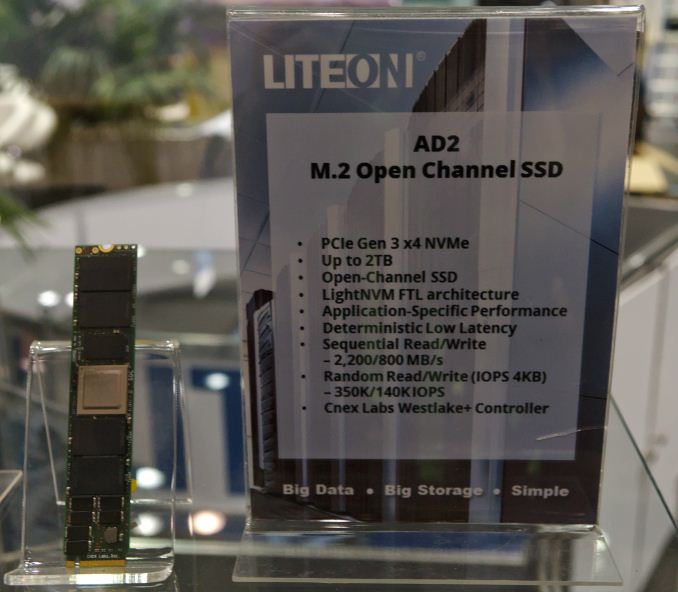
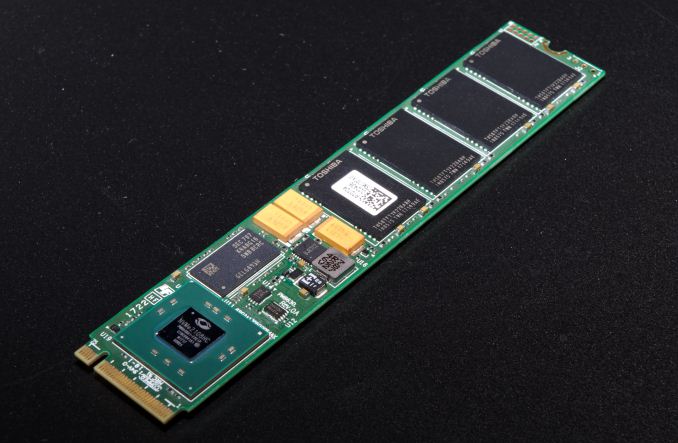

 Quote
Quote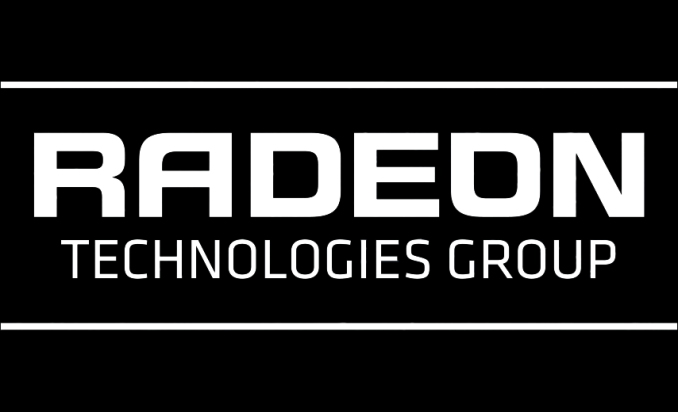

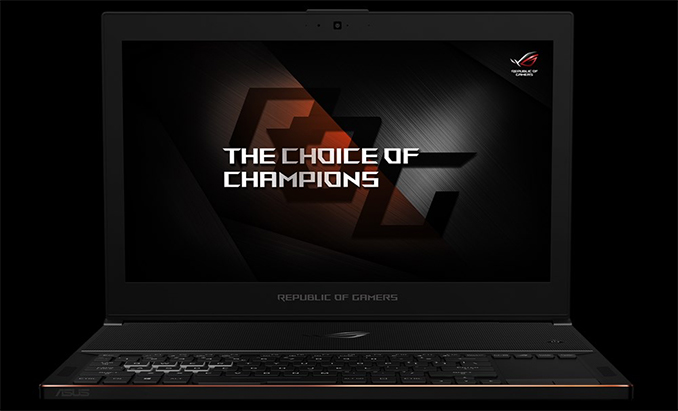
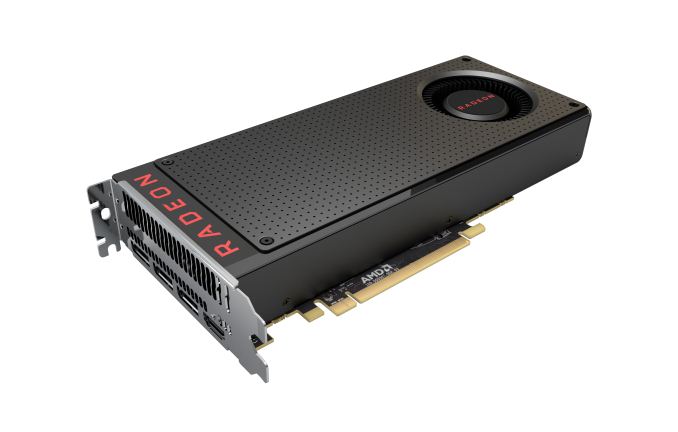
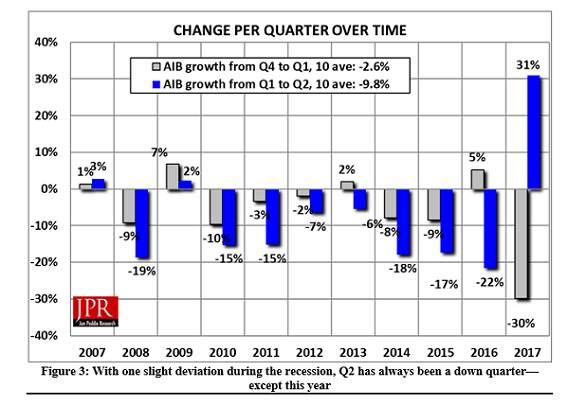
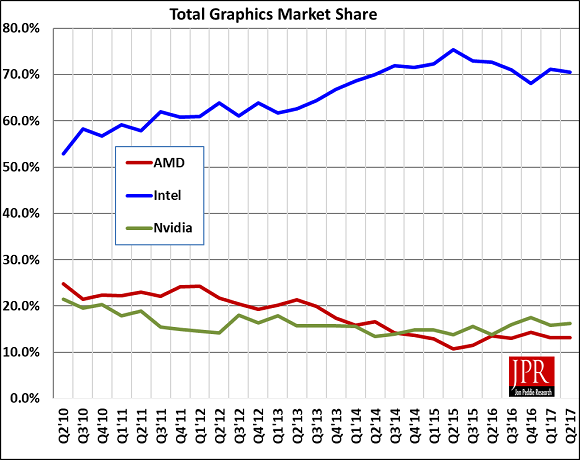



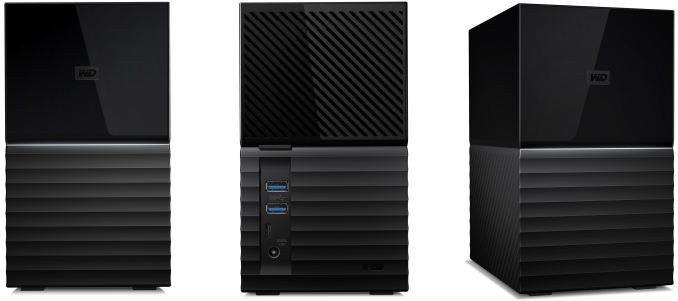
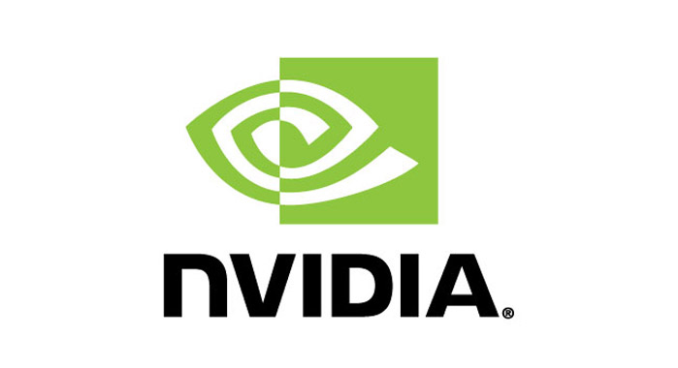


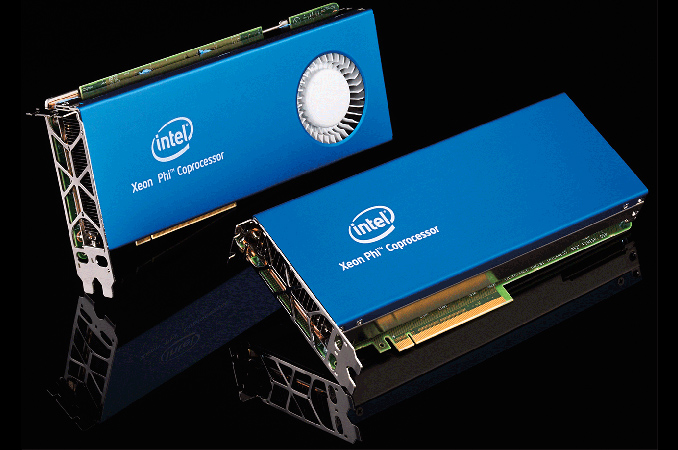

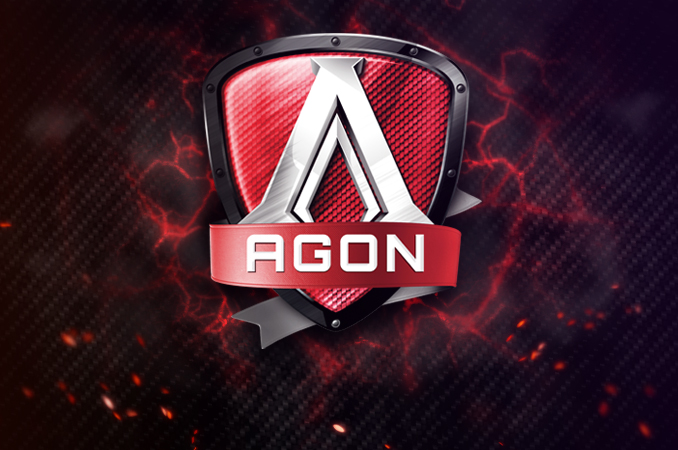

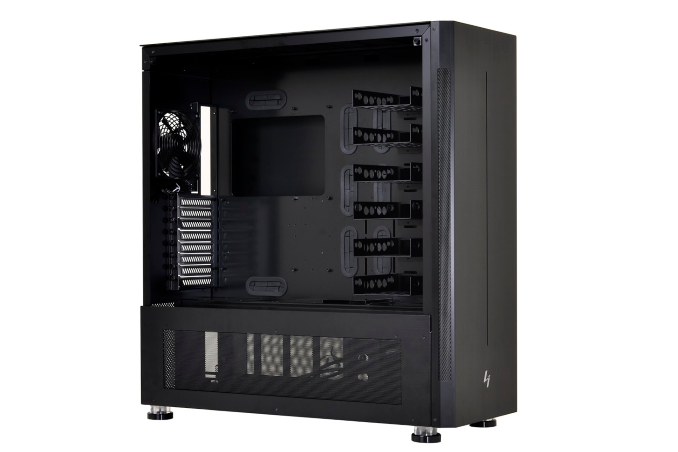
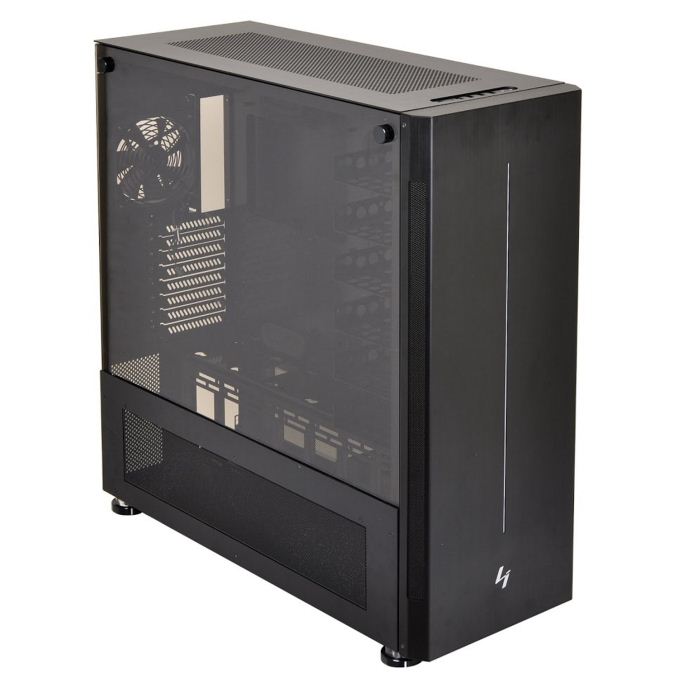

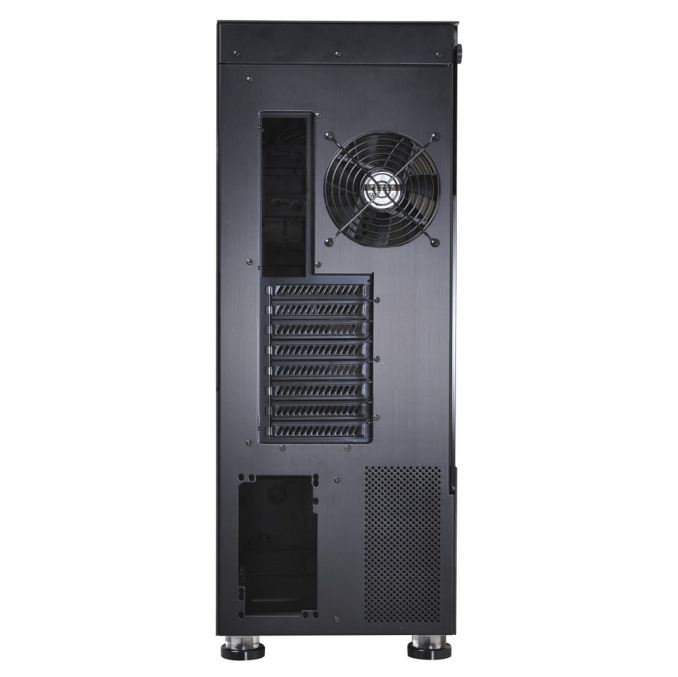
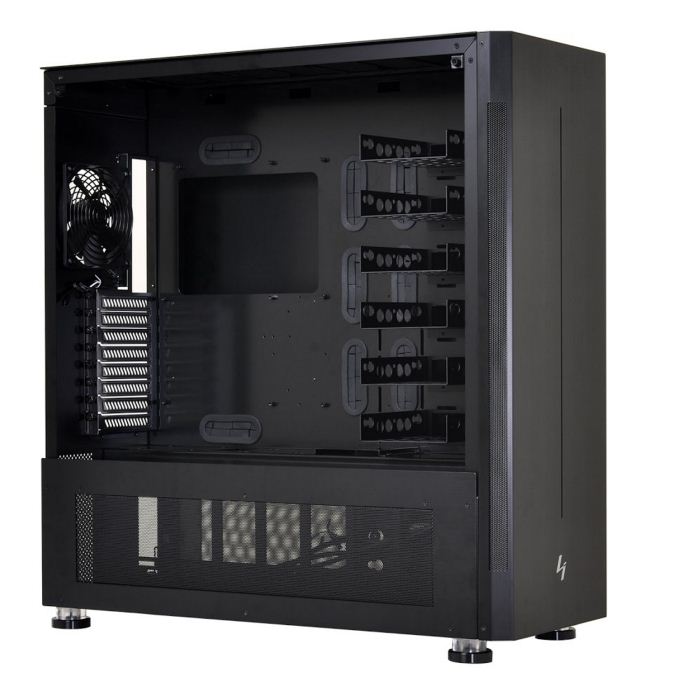
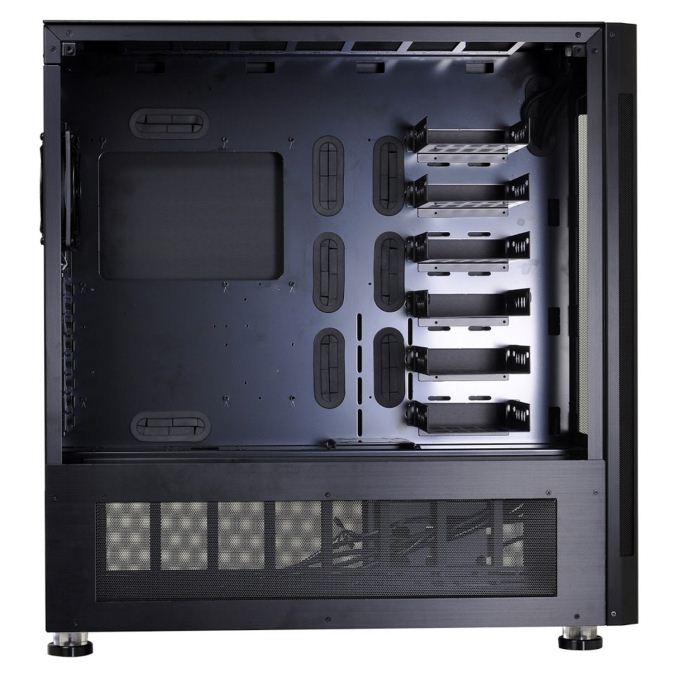
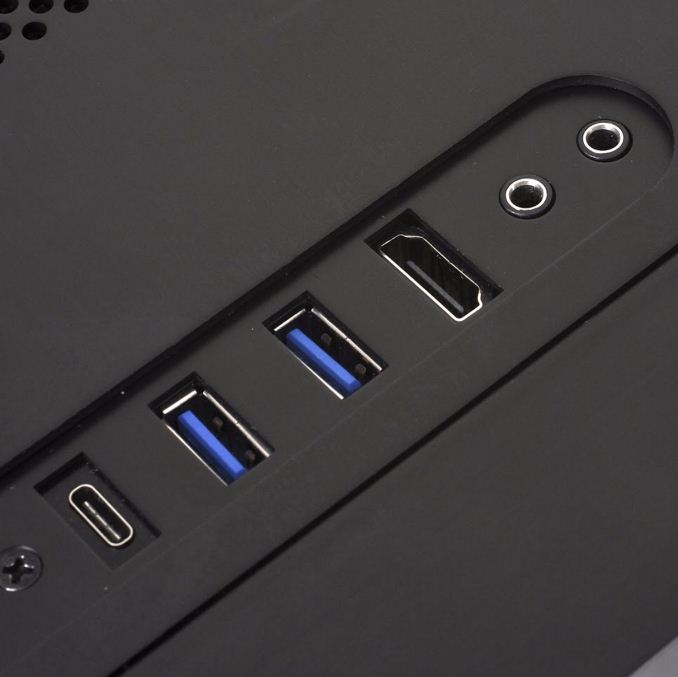
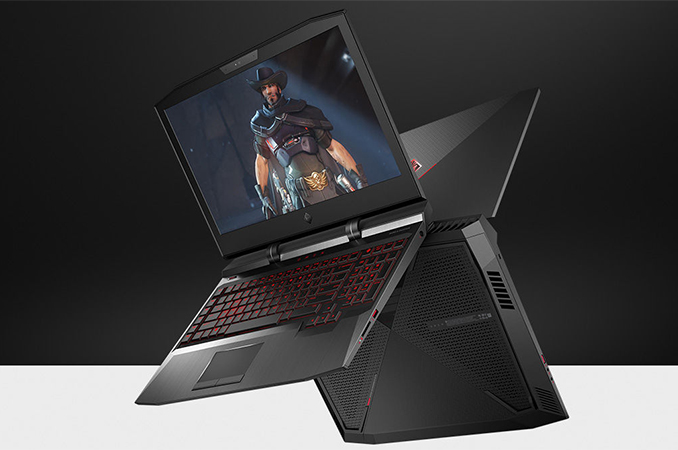
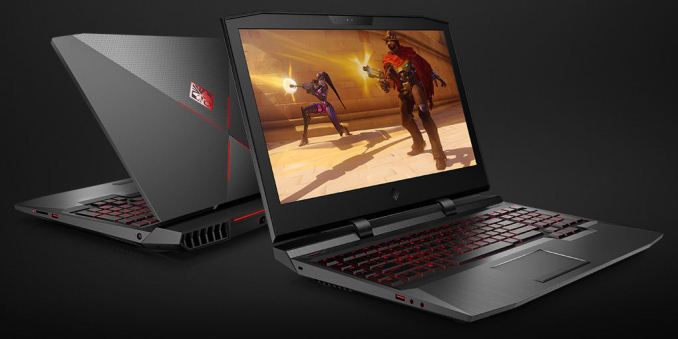
















Bookmarks